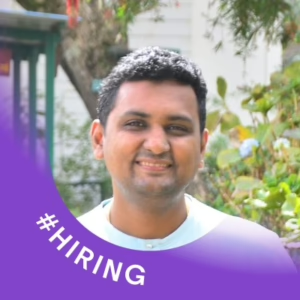The workplace is going through a quiet transformation. Flexible schedules and digitally-driven operations are replacing the rigid 9-to-5 model. This shift opens up new opportunities, but it also brings with it complex challenges. Many of these fall on HR’s desk.
HR leaders today aren’t simply supporting a distributed workforce; they’re also enabling more intelligent, empowered ways to work. And increasingly, this means using technology with purpose.
It’s not about getting more done in less time. It’s all about automating mundane tasks, removing friction and creating environments that allow people to focus on the important things. It is also about using intelligent system to unlock human potential.
Explore five common productivity blocks and learn how HR can overcome them using technology.
1. Manual workflows hold back teams
Manual processes are slow. These processes are prone to error, difficult to control remotely and can often get in the way. Using only physical documents increases complexity, introduces storage problems and raises concerns about data security.
Document Management Systems and digital workflows are the smarter choice. Organisations can increase accuracy and control of information by automating routine tasks, replacing paper-based methods and replacing them with digital workflows. Employees can collaborate more efficiently and work without delays with instant access to documents. This results in a workplace that is more responsive and agile. It’s designed to meet the needs of modern businesses.
2. Turn information chaos into clarity
Each week, employees spend hours searching for information. This drains their productivity and interrupts the flow. Collaboration suffers without a centralised searchable system. Frustration also increases.
Intelligent document processing (IDP), changes the game. IDP uses AI to extract, classify, and capture content from documents. Imagine it as a search engine for your workplace, tailored to the needs of your organization. It allows employees to find the information they need in seconds rather than hours. This reduces duplication and speeds up decision making.
Communication is fragmented in many organisations. In many organisations, communication is scattered across platforms. This fragmentation causes confusion and slows projects down. This can be solved by unified digital workspaces, which combine communication, collaboration and documents management in one central hub. These platforms provide secure access to tools and information for everyone, no matter where they are or what time zone they’re in.
AI brings collaboration to a new level, reducing the amount of manual work required to summarise meetings, identify risks and streamline access to information. Some intelligent tools also allow employees to retrieve and summarize documents quickly without interrupting their workflow. These tools, which are designed as an alternative to traditional searches, are exclusively trained on B2B data. They will also evolve with feedback from customers to provide precise and business-specific insights immediately.
4. Too much data, too little insight
Today, HR teams have more data at their fingertips than ever before. From engagement scores to exit interview dashboards and DEI dashboards. This data can be overwhelming without context or structure. The challenge for HR, therefore, is not to collect more data but rather, to turn it into insights.
AI-powered analytics helps HR leaders to make sense of noise. Natural Language Processing can be used to analyse feedback at scale and identify trends.
Data management is also important for gaining insight. File-sharing programs are convenient but lack the governance and access controls needed to protect sensitive HR data. Smart DMSs offer structured access, versioning and GDPR compliant storage. This ensures that data is secure, but also usable.
5. Change isn’t only technical; it’s also human
People are the biggest obstacle to digital transformation. Even the most promising initiatives can be slowed down by fear of change, a lack of clarity, and inadequate support. The best tools won’t work without employee buy-in. This is where HR can play a crucial role.
A successful transformation is dependent on a people-first strategy. Early employee involvement is key. Communication should be clear. Training and support should be provided on-site. By empowering users with feedback loops, phased rollouts and internal champions that can demonstrate new behaviors, you will empower them. Strong communication is even more important in hybrid and remote environments to avoid duplication and maintain alignment. HR’s ability, and not simply its implementation of tools, to guide employees through the change process will ultimately determine any transformation.
The HR role in the Smarter Work Revolution
HR professionals have a unique opportunity to lead the revolution in smarter work. By removing productivity blocks, promoting AI-enhanced process and cultivating cultures of trust, HR professionals can not only respond to the future of work but also shape it.
Remember that working faster doesn’t necessarily mean working smarter. It’s about working with purpose. It means working with purpose.


